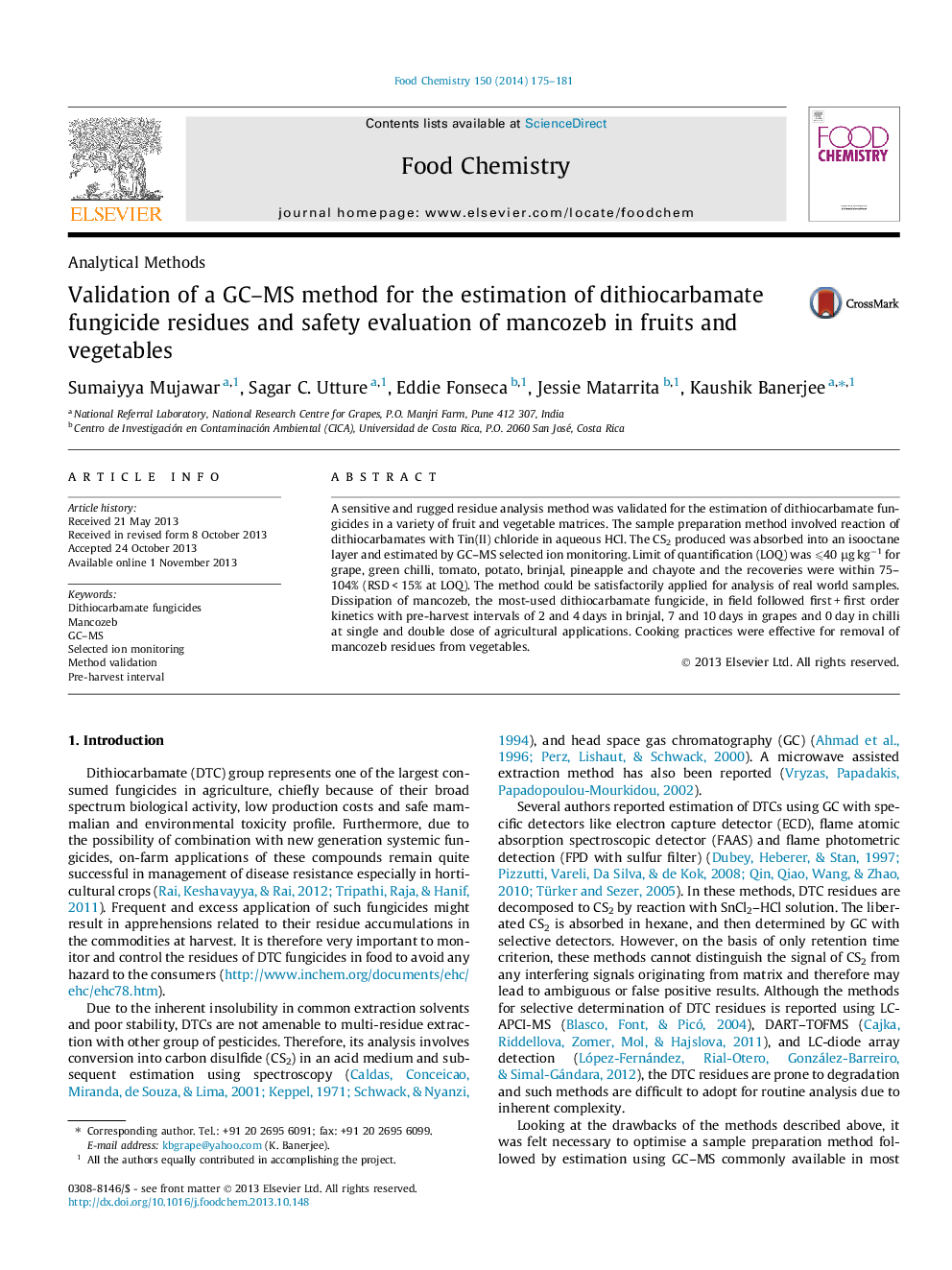| Article ID | Journal | Published Year | Pages | File Type |
|---|---|---|---|---|
| 7599313 | Food Chemistry | 2014 | 7 Pages |
Abstract
A sensitive and rugged residue analysis method was validated for the estimation of dithiocarbamate fungicides in a variety of fruit and vegetable matrices. The sample preparation method involved reaction of dithiocarbamates with Tin(II) chloride in aqueous HCl. The CS2 produced was absorbed into an isooctane layer and estimated by GC-MS selected ion monitoring. Limit of quantification (LOQ) was ⩽40 μg kgâ1 for grape, green chilli, tomato, potato, brinjal, pineapple and chayote and the recoveries were within 75-104% (RSD < 15% at LOQ). The method could be satisfactorily applied for analysis of real world samples. Dissipation of mancozeb, the most-used dithiocarbamate fungicide, in field followed first + first order kinetics with pre-harvest intervals of 2 and 4 days in brinjal, 7 and 10 days in grapes and 0 day in chilli at single and double dose of agricultural applications. Cooking practices were effective for removal of mancozeb residues from vegetables.
Keywords
Related Topics
Physical Sciences and Engineering
Chemistry
Analytical Chemistry
Authors
Sumaiyya Mujawar, Sagar C. Utture, Eddie Fonseca, Jessie Matarrita, Kaushik Banerjee,
